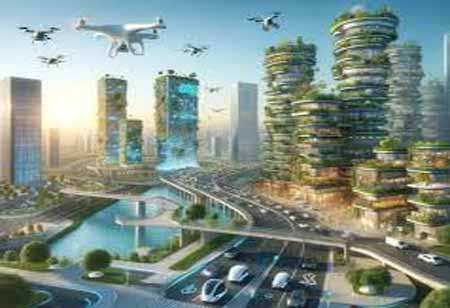Fremont, CA: Urban planners are utilizing AI to assess development concepts, analyze zoning modifications, and develop new city master plans or enhance existing ones.
However, there are still issues with generative AI's integration into "PlanTech," or the digitalization of urban planning, and the question of whether AI is valuable enough to warrant its application still stands.
The High Costs and Potential Risks of AI in Urban Planning
The financial and environmental costs of developing and maintaining AI infrastructure are high. If generative AI only addresses minor issues rather than major ones, the question of whether these expenses are worthwhile may arise for communities. Urban planners may also be especially sensitive to worries about biased training data producing biased generative AI models, given their field's lengthy and complicated history of inequality.
Smart Cities and the Integration of Technology in Urban Design
The advent of "smart cities" in the early 2000s was one of the first significant attempts to incorporate cutting-edge technologies into contemporary urban design. Smart cities enhance the quality of urban services by using information and communication technology (ICT), including 3D imaging and information modeling. For instance, an innovative trash management system has been implemented in San Francisco to maximize waste collection and disposal through sensors and internet-connected equipment.
Although the use of technology in smart cities has increased productivity, it is uncertain whether this has resulted in a better standard of living for their residents. Additionally, by emphasizing modeling and algorithms, smart cities may undervalue those facets of urban life that are difficult to quantify.
The Promise and Challenges of Digital Twins in Urban Planning
A concept known as "digital twins," which are real-time virtual representations of urban regions, ranging from a building to a whole city, represents a more recent wave of technology innovation in urban planning. Similar to how NASA trains astronauts and mission control personnel using digital spaceship simulators, urban planners can test their designs and land use plans using these digital twin simulations before they are put into action.
Municipalities can use digital twins to investigate the effects of natural calamities, such as floods that occur once every 100 years or periods of intense heat, and to create a response. Before the actual development is constructed, new structures or regions can be modeled and tested under a variety of conditions using a digital twin.
Despite the potential for digital twins to forecast future difficulties and help planners create robust solutions, a few barriers prevent their widespread use. Creating and maintaining a digital twin simulation is one of the most demanding. The enormous volumes of data needed for these simulations are frequently gathered from many different sources and saved in formats that aren't always compatible.

